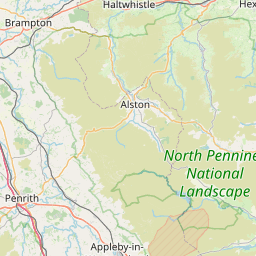Contaminated land is where substances could cause significant:
- harm to people or protected species
- pollution of surface waters or groundwater
Contaminated land can be harmful to people's health and the environment, even years after it was first contaminated.
We must identify contaminated land in our area and find appropriate people to clean it up and make sure it’s suitable for its present use. You can find out more about how we deal with contaminated land in our:
Land quality strategy and hardship policy for the Barrow area (PDF, 5.9MB)
Contaminated land strategy for the Eden area (PDF, 1.4MB)
Contaminated land strategy for the South Lakeland area (PDF, 641KB)
Cost recovery and hardship policy (PDF, 137KB)
Contamination on your land
If historical evidence or a study shows contamination may be present on land you own, you're likely to have to research and investigate the issue. You may also need to clean up the contamination or put protective works in place to make the land suitable for a particular development or use. There are companies who are trained to do this type of work – contact us using the details at the bottom of this page for advice to make sure work is of the required standard.
Find out more about dealing with land contamination on GOV.UK
Contaminated land and development
Land that has previously been developed may present a risk to current and future users and so have limitations for future development. Management processes are needed for sites like these so that land contamination can be dealt with in a way that’s consistent with UK government policies and legislation.
The possibility of contamination should always be considered, regardless of past land use, when development is for a particularly sensitive use, such as housing with gardens, schools, nurseries or allotments.
If you’re developing or planning to develop a brownfield site, or the proposed end use is sensitive, please see our guidance on the development of potentially contaminated land and sensitive end uses (PDF, 736KB). It lists the information required, some key publications and things to remember when constructing reports.
Contaminated land in the area
Currently there are no sites in our area that have been designated as contaminated under the legislation.
Barn and agricultural building conversions
The varied uses of farms over the years can lead to land contamination issues which need to be resolved before barns and agricultural buildings can be converted into homes.
To help make sure that the development will be safe and suitable for living in, we need to find out what the buildings and land were used for. When applying to convert barn and agricultural buildings into homes, include the previous uses of any existing buildings within the proposed development area including any to be demolished. Also include the location of any:
- fuel storage, both above and below ground
- filled pits and the farm tip
- bonfires
- chemical storage like pesticides or herbicides
- foot and mouth burial sites
- asbestos and asbestos containing materials on or close to the proposed development, for example lagging or roof sheeting
- services like fuel lines, water, gas and electricity
- cesspits, oil interceptors and electrical sub-stations
Form to help you collect information
We've created a form to help you collect information that will help us make an informed decision and reduce the need for planning conditions requiring site investigations. Just because a site does have some of the above identified uses does not necessarily indicate that there will be an expensive clean up, but that during development certain issues need to be considered.
Barn and building conversions pre-determination form (PDF, 127KB).
If we do not receive a completed form before your planning application is decided, we may recommend a planning condition requiring a comprehensive survey for contamination and this form would not be acceptable to satisfy a planning condition.
Contact us
Contact the environmental protection team for your local area.





